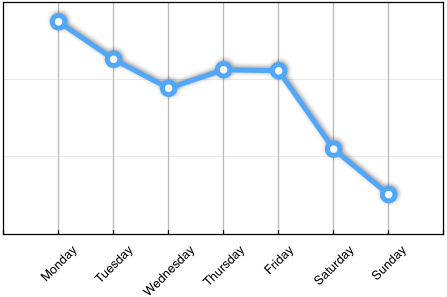Many contact centers find that the predictability of traditional 5x8 schedules are an attractive quality of life feature for their staff. Unfortunately, while these types of shifts are an easy solution when the weekly demand curve is flat, for many workforce planners, the demand curve looks more like this:

Without flexible schedules, overtime, or additional part time staff, these planners are left trying to balance painful wait times on Mondays and Tuesdays against overstaffing on Thursdays and Fridays. Slant schedules give workforce planners an additional tool that can improve weekly efficiency without additional costs.
In its simplest form, a slant schedule is one with 10 working hours on Monday, 9 on Tuesday, 8 on Wednesday, 7 on Thursday, and 6 on Friday. This shifts capacity from slower days to the busiest days, and it can be effective even on a voluntary basis: in a modestly sized 40-seat contact center, a 10% participation rate can add 8 working hours on Monday; the equivalent of an additional employee but without the costs. As a bonus, many staff members find the reduced working hours later in the week attractive, as this gives them time to schedule appointments without taking time off.
Even if your demand curve is different (perhaps a regular marketing campaign gives you a second peak on Wednesday), you can still take advantage of the slant model. A 10-8-9-7-6 distribution of working hours can improve service levels on your midweek peak day, and this model can be applied to many weekly curves. Contact centers with a more even demand curve can see results with a smaller daily difference, such as 9-8.5-8-7.5-7; this can also be a good compromise for contact centers whose employees find a four hour swing in their weekly working hours unattractive.
If your demand curve is predictable but varies from week to week (due to variable campaign schedules, billing dates, and similar known events), you can still take advantage of the slant model if your staff has some flexibility in their weekly schedule. Your goal is to distribute longer working days where they’re needed most, while keeping overtime needs low and maintaining full-time schedules for your staff.
Did you find the article interesting and would like to share it with your colleagues? Download the article as a PDF.




